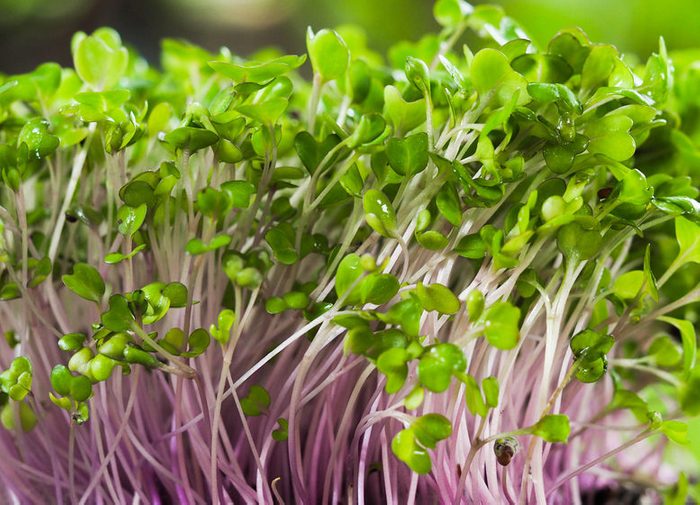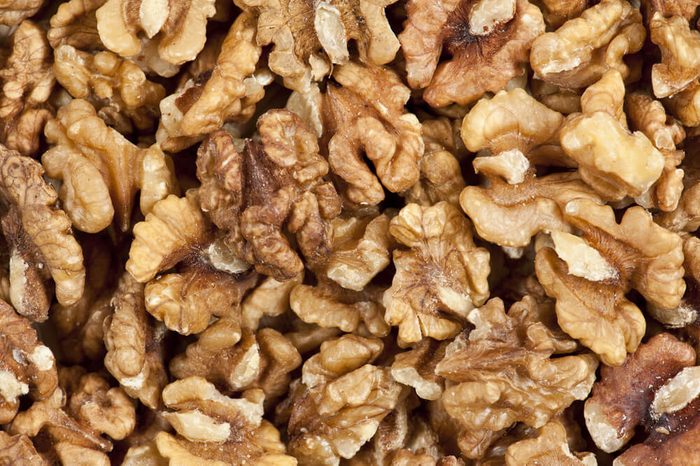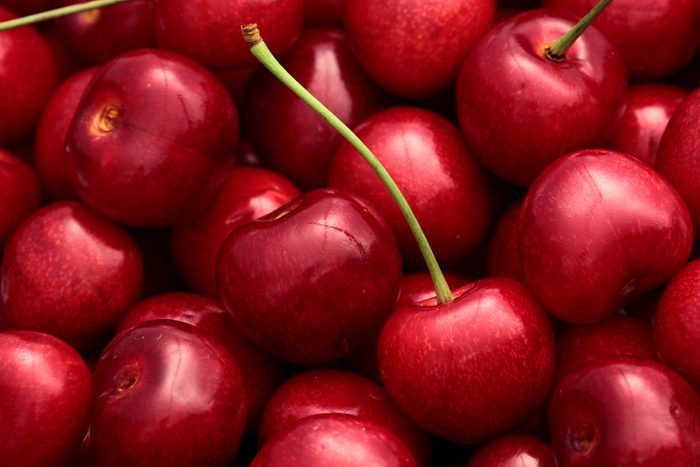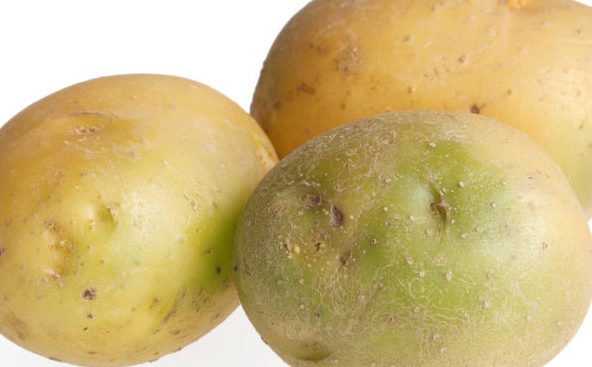
Meat and poultry
This seems like a broad category, we know. But 29 percent of all deaths from foodborne illnesses originate in meat and poultry, according to outbreak data collected by the U.S. Centers for Disease Control and Prevention (CDC). And overall, pathogens in food are a bigger killer than allergens or toxic chemicals—the CDC estimates that about one in every six Americans gets sick from food each year, and around 3,000 of those people die. Make sure your meat and poultry are cooked to appropriate temperatures (145 degrees for cuts of beef and pork, 160 for ground meat, and 160 degrees for poultry). Find out exactly how long you can safely store meat in your fridge.

Raw dairy products
“I personally do not drink raw milk. Pasteurizing milk reduces or removes potential hazards,” says Amanda Kinchla, associate professor at the University of Massachusetts Department of Food Science. Although raw dairy has an enthusiastic following among people who say it tastes better than pasteurized milk (which has been heated to kill pathogens) and can cure eczema, the CDC points out that almost 2,000 illnesses and 144 hospitalizations were attributed to outbreaks of germs from raw dairy products between 1993 and 2012. Raw milk, soft cheese, ice cream, and yogurt are all risky. Here are some other foods that can be dangerous if eaten raw.

Raw sprouts
Paul Dawson, a food science professor at Clemson University’s College of Agriculture, Forestry and Life Sciences, says he doesn’t eat raw sprouts if he doesn’t know where they’ve come from. Although raw sprouts look like a health food, they’re grown in warm, humid conditions that can also be ideal for the proliferation of pathogenic bacteria, says Foodsafety.gov. Kids, elderly people, and pregnant women are most susceptible to illness from contaminated sprouts.

Peanuts
“Statistics on food allergy deaths vary,” Dawson says. “But the CDC reported that there are about 11 deaths in the United States each year due to an allergic reaction to food.” Although food allergies are less deadly than foodborne illnesses, individuals who live with them have to be very vigilant about their meals and surroundings. For those who are allergic to peanuts, exposure to even a tiny amount can cause symptoms that range from a runny nose to full-on anaphylaxis, when the throat swells, making it difficult or impossible to breathe. Peanut allergies are the most common cause of food-related anaphylaxis, according to Mayo Clinic. Most people who are aware of their peanut allergy carry an epinephrine injector, and many schools now keep the medicine on the premises in case of emergencies. Here are other foods that are responsible for almost all food allergies.

Tree nuts
The American College of Allergy, Asthma & Immunology estimates that between a quarter and 40 percent of people who are allergic to peanuts are also allergic to at least one tree nut, a category that includes almonds, cashews, walnuts, and pine nuts. Along with peanuts and shellfish, it’s one of the primary causes of anaphylaxis.

Shellfish
Shrimp, crab, lobster, clams, mussels, oysters, and scallops are a double-threat to some people: Shellfish are one of the food allergens that most commonly lead to deadly anaphylaxis, and raw shellfish are also one of the most common causes of foodborne illnesses. Raw oysters, in particular, can be contaminated by Vibrio bacteria, which can cause gastrointestinal problems, bloodstream infections, skin blistering, and even death, according to the CDC. (The agency takes pains to point out that hot sauce, lemon juice, and alcohol do not kill bacteria, but proper cooking does.) Take a look at these foods you had no idea could give you food poisoning.

Starfruit
For most of us, this sweet and pretty yellow fruit is safe to eat—but that’s only because our kidneys filter out a neurotoxin called caramboxin, according to Phys.org. For people with kidney disease, starfruit can actually be deadly, because caramboxin—which the diseased kidneys can’t clear—can reach the brain and cause severe symptoms including hiccups that won’t stop, vomiting, weakness, and confusion. Without dialysis, patients can suffer long seizures, comas, and death.

Cherry pits
“There are chemicals inside of cherry pits that can liberate cyanide,” says Carl K. Winter, an extension food toxicologist at the University of California, Davis. But that doesn’t mean you have to swear off cherries: “The first principle in toxicology is that the dose makes the poison,” Winter says, and the amount of cherry pits one would have to eat to suffer the ill effects of cyanide exposure is unrealistically large. “The best diet is one in which people eat a variety of different foods,” Winter adds. “Everything is fine when consumed in moderation.” Read about cooking mistakes that can make your food toxic.

Apple and pear seeds
Cherries aren’t the only fruit with poisonous seeds. “Many seeds and pits contain compounds that, when eaten, are digested into cyanide,” Dawson says. “These compounds are collectively known as nitrilosides, which have been proposed as actually being an essential nutrient. However, when consumed in extremely high concentrations, hydrogen cyanide can reach dangerous levels in the body.”

Cassava
This starchy root is another potential poisoner: “It’s similar to cherry pits in that it has cyanogenic glycosides, chemicals that can liberate cyanide,” Winter says. “For [parts] of the world for which cassava is the main source of starch, they have to go through a pretty elaborate procedure to reduce the amounts of cyanide.” Those procedures include peeling and thorough cooking, according to Kitchn. Learn why these foods used to be bad for you—but aren’t anymore.

Ackee
The national fruit of Jamaica also requires extreme care—although it’s beloved in dishes like ackee and saltfish, it’s also known to cause Jamaican vomiting sickness, according to Medscape. That’s because when it’s unripe, ackee contains a poison called hypoglycin A. The fruit is only safe to eat when it has turned red and opened of its own accord. At that stage, it reveals large black seeds that are poisonous at all stages, as is the skin. Only the yellow flesh is edible.

Raw elderberries
These berries aren’t usually grown commercially, but they’re pretty easy for foragers to find in the wild across Europe and the United States. They make delicious jams, compotes, syrups, and pies, according to the BBC, but only after they’re cooked. Raw berries (and the plant’s bark and leaves) contain a compound that can cause nausea—the CDC describes an incident in 1983 when a California religious group served fresh elderberry juice, and eight people suffered nausea, vomiting, cramps, and weakness, and some of them complained of dizziness, numbness, and stupor. Parts of the plant can also contain toxic substances—livestock animals have died after eating its roots and young leaves. Check out the weirdest, grossest foods people eat around the world.

Wild mushrooms
“If you’re an experienced mycologist, it’s a great hobby for you,” Winter says. “You know what you’re doing, you know what to avoid.” If, on the other hand, you’re not completely sure what kind of mushroom you’re looking at, don’t pick it. The death cap mushroom’s toxins totally resist cooking and will cause severe illness within hours, leading to coma and eventually death in half of the people who eat it, according to Britannica.com. Numerous other slightly less toxic varieties can cause long-term liver and kidney damage if ingested.

Green potatoes
When they’ve been sitting around for a while, exposed to light and warm temperatures, potatoes can start to produce a chemical called solanine that, in high enough concentrations, can cause nausea, headaches, and neurological problems, according to the New York Times. Conveniently, though, you can tell it’s happening because the potatoes turn green—they produce chlorophyll at the same time they’re making solanine. If you see green spots, cut them off your potatoes before cooking. Find out the foods that food safety experts never, ever eat.

Fugu
Fugu, aka pufferfish, are the second-most poisonous vertebrate in the world (after the golden poison frog), but their meat is sold for hundreds of dollars at high-end restaurants in Japan, reports CNN. Chefs are required to train for three years before passing a test to be sure they’re qualified to prepare the delicacy, but it still causes numerous cases of food poisoning every year—most among fishermen who prepare the fish at home, according to the BBC. Another reason not to eat it? It’s illegal in the U.S.—and so are these 11 other foods.